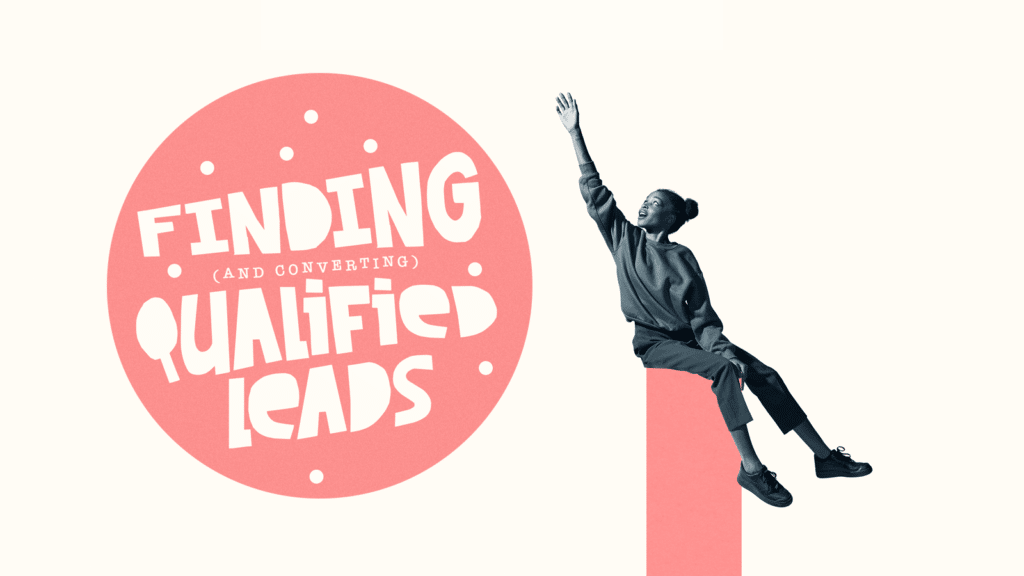Finding and Converting Qualified Leads

Consumers are self-educating through every phase of the customer lifecycle more than ever before, and their behavior changes at each phase. While lead generation strategy is wide-reaching topic, we’ll be focusing on a few areas that are relevant to making sure your leads find what they need on the path to becoming customers.
Awareness
When someone lands on your website, the best way to move them from visitor to lead is with relevant content that answers the most pertinent questions. Provide thought leadership through infographics, relevant blogs, how-to content, articles, interactive elements, FAQs, etc. The tone should convey reliability and trustworthiness. At this point in the cycle, your potential leads crave resources that provide answers quickly with few (or ideally zero) hurdles. Build awareness of your brand by providing engaging resources that are easy to find and even easier to remember.
Consideration
A lead moves into the consideration phase through any number of entry points: website, retargeting, referrals, social media, etc. While the entry to the site varies, the motive is the same—they are seeking content that affirms and demonstrates your product/service is relevant to their goals.
For retargeting, specifically, a landing page with a strong Quality Score can help qualify leads early. Retargeting is when someone visits your website, leaves, and is served ads to bring them back to your site later. Think of it as bringing “window shoppers” back into your store when they’re ready to buy. Providing relevant website content where leads can self-qualify themselves results in more ideal leads, lower CPC, and (ultimately) lowers your cost per conversion.
You can take this a step further by fine-tuning your strategy as your landing page gains traffic. Researching keyword, refining ad text, optimizing landing pages, and adding negative keywords can all help to efficiently qualify leads that are the best fit to become customers. Test ad text specifically for leads that are in-market for your products/services, not just for a wide audience.
The website should direct leads to gated content, downloadable e-books, and other content that allows them to opt-in, as well as continue to build trust and interest.
At this point, idea leads’ goals and interests should line up with your companies’ expertise and experience – and the website content demonstrates your company’s knowledge on how to provide solutions to their pain points.
Lead Generation
For the Lead Generation phase to provide rewards, the Awareness and Consideration phases must first be effective. Otherwise, you’re still educating the lead on your value proposition, providing resources and building trust… while simultaneously trying to qualify and convert.
Once trust is established, lead magnets or content upgrades can be powerful tools that indicate a lead is ready to move towards becoming a marketing qualified lead. Examples include exclusive newsletters, whitepapers, webinars, tutorials, demos, samples, trial subscriptions, free consultations, sneak peeks, guides, exclusive podcast content, etc. These are all items that were not available (or of interest) for searchers during the Awareness phase – they’ve moved through the customer lifecycle to a point where these items are all of high value and relevance.
Insights gathered from SEO and SEM metrics can help inform campaign personalization, from email campaigns, to marketing automation and other lead nurturing efforts, and drive people to your contact form or page when they are ready to convert. Google Ads even offers a lead form extension – so your leads can submit a form inside the ad… all without ever leaving the SERP.
What is an MQL?
A marketing qualified lead (MQL) is a potential customer who has expressed some level of interest in your products by taking an action: newsletter subscriber, form fill, chatbot convo, requested more info, requested demo, downloaded gated content, etc. You know from their actions that an MQL is interested in what you offer but needs more attention from sales to learn before making a decision to buy your product or hire your services.
Sales Generation
The final phase is moving a marketing qualified lead to a sales opportunity. Tried and true methods include phone calls and personalized emails. Retargeting the MQL with a webinar or other high-value content can also be effective.
At this point, the lead is familiar with your company (Awareness), is engaging and benefitting from your valuable content (Consideration), and because of the trust built, has opted in for more information (Lead Generation). At each stage, providing relevant resources that they’re searching for has helped move them through the customer lifecycle.